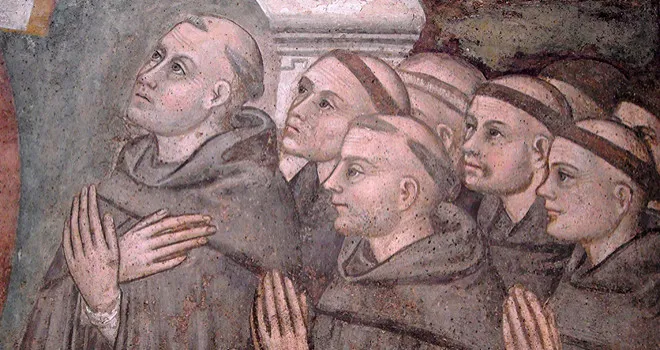
Monasticism, through its disciplined communities of monks and nuns, preserved ancient knowledge, advanced education, and laid foundational stones for Western civilization during the Middle Ages.
In their scriptoria, monks tirelessly copied manuscripts of classical works by Aristotle, Virgil, and others, alongside Scripture. This painstaking work ensured that vital texts survived the collapse of the Roman Empire and the ensuing turmoil. Their efforts kept Greek and Roman learning alive for future generations.
Monastic schools initially trained monks and clergy but soon opened to the laity, teaching reading, writing, and theology. Over time, these schools evolved into cathedral schools and the first universities, like Bologna and Paris.
Monks introduced techniques like crop rotation, selective breeding, and swamp drainage, turning wilderness into fertile fields across Europe.
Monasteries acted as medieval hubs of charity and stability, offering food, shelter, and rudimentary healthcare to the poor and travelers. They also preserved social order during times of war and upheaval by providing a moral and communal anchor. This support was vital in an era without centralized welfare systems.
Monks crafted stunning illuminated manuscripts, composed Gregorian chants, and built awe-inspiring Gothic monasteries. These works not only glorified their faith but also set artistic standards that influenced secular culture for centuries. Their architectural innovations, like the pointed arch, later shaped cathedrals and civic buildings alike.
Through disciplined prayer and contemplation, monks like St. Benedict, whose Rule shaped monastic life, enriched Western spirituality. Their writings and practices influenced Christian ethics and theology.
Monastic communities brewed beer, made wine, and traded goods like wool and cheese, boosting local economies. Their self-sufficiency and innovation spurred commerce in rural areas. By the High Middle Ages, some monasteries were economic powerhouses, employing laborers and managing vast estates.
Monastic scholars preserved Roman legal texts and developed canon law, which influenced secular governance and church-state relations in the West.
Monasticism bridged antiquity and modernity by preserving classical knowledge, fostering education, and stabilizing society through its institutions. Its universities and intellectual traditions fueled the Renaissance, while its agricultural and economic innovations supported population growth. Figures like Aquinas, educated in monastic-influenced settings, shaped philosophy and science for centuries.
Secular histories often frame the Middle Ages as a “dark” period (the so-called "Dark Ages"), sidelining monasticism’s role in preserving culture and advancing progress. This overlooks how monks quietly built the foundations of Western civilization. Their contributions are overshadowed by later secular achievements.